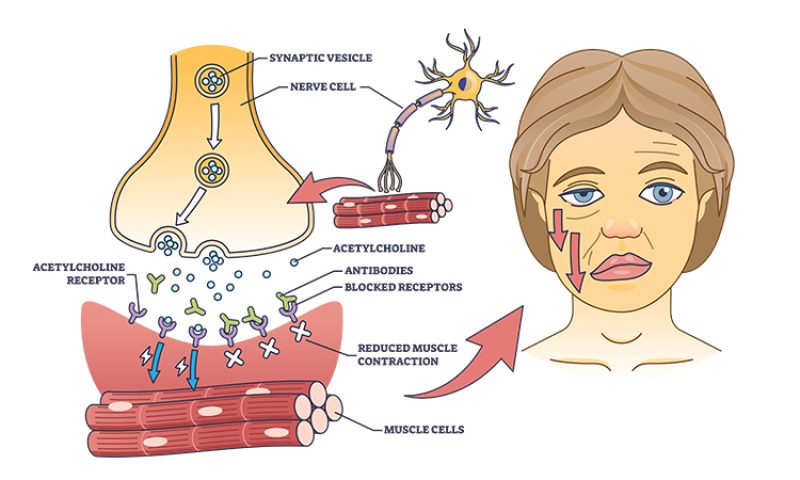
Myasthenia Gravis
Schneck Neurology provides expert care for Myasthenia Gravis, offering tailored support and treatments to manage symptoms and improve functionality.
What is Myasthenia Gravis?
Myasthenia gravis weakens the skeletal muscles responsible for movement. This condition affects muscles in the face, neck, and limbs. It also impacts eye movement, talking, and physical tasks like lifting objects. The muscle weakness associated with myasthenia gravis tends to worsen after physical exertion. This chronic neuromuscular condition has a lasting impact on nerves and muscles. While there's no cure, effective treatments are available to manage symptoms.
Myasthenia Gravis Symptoms
The first symptoms appear in the eyes of more than half of myasthenia gravis-affected people. This includes drooping and double vision. About 15% of those with myasthenia gravis experience symptoms in their face and throat including difficulty speaking, problems, swallowing, difficulty chewing, and adjustments to their normal facial expressions. Symptoms can also appear in the neck and limb muscles causing weakness and difficulty moving. Because myasthenia gravis impacts muscles, symptoms are particularly noticeable in muscles that are being used.

Causes of Myasthenia Gravis
Nerves communicate with muscles by releasing neurotransmitters, which bind to receptor sites on muscle cells. In myasthenia gravis, the immune system produces antibodies that prevent communication to many receptor sites for the neurotransmitter acetylcholine, leading to muscle weakness. Antibodies can also block proteins like MuSK and LRP4, which are important for the nerve-muscle junction, contributing to the condition. Some cases of myasthenia gravis are caused by other, yet unidentified antibodies, leading to a form called seronegative myasthenia gravis, which is still believed to be autoimmune in nature.

Testing and Diagnosis
Doctors diagnose myasthenia gravis based on symptoms and specific tests. During a physical exam, they inquire about medical history and symptoms. A common diagnostic method involves testing response to anticholinesterase medicine; an improvement in muscle weakness confirms myasthenia gravis. Other diagnostic tests include blood tests for antibodies, genetic tests for hereditary conditions, nerve conduction studies (such as repetitive nerve stimulation), and electromyogram (EMG) to measure electrical activity in muscles.
Treatment at Schneck
Treatment for myasthenia gravis is personalized based on factors such as age, overall health, medical history, severity of the condition, tolerance for specific treatments, duration of the condition, and patient preference. Although there is no cure, symptoms can often be managed. The goal is to enhance muscle function and prevent issues with swallowing and breathing. Treatments include medicine, thymectomy (the removal of the thymus gland), replacing abnormal antibodies with normal ones (known as plasmapheresis), and the intravenous (IV) introduction of immunoglobulin products which can decrease the immune system’s attack on the nervous system. We still utilize the standard treatments such as Mestinon, IVIG, etc., along with the newer medications like Vyvgart, and are seeing wonderful results.
Find Support at Schneck Medical Center
If you're dealing with myasthenia gravis, Schneck Neurology is here. Don't let myasthenia gravis hinder your daily life. Seek out expert care at Schneck Neurology. Your well-being and functional improvement are our top priorities.
